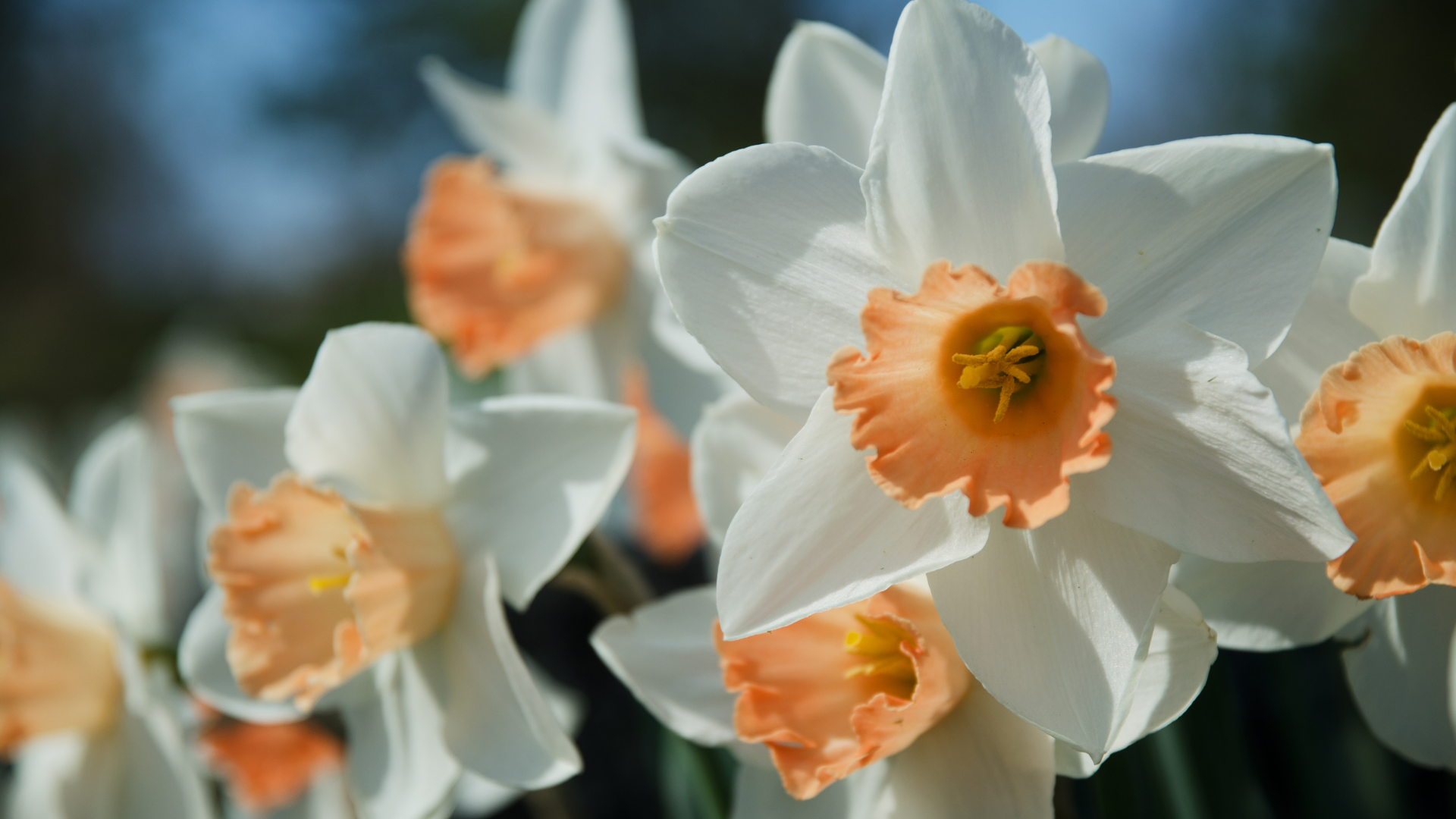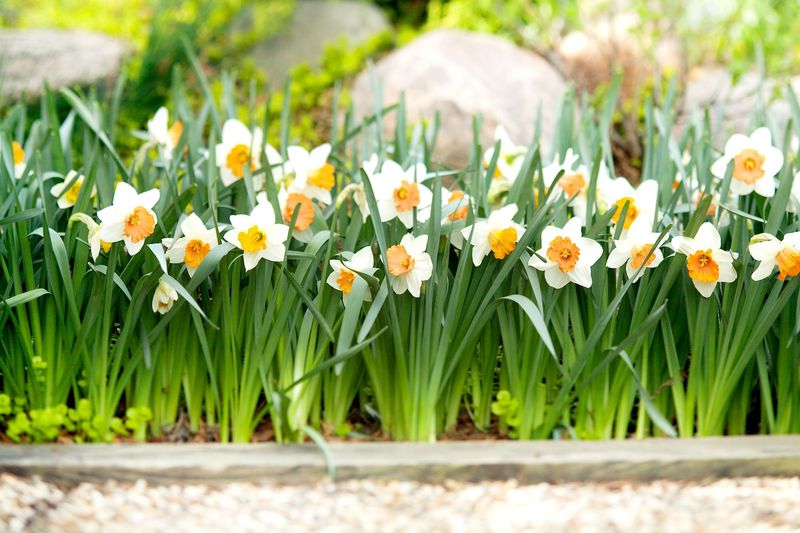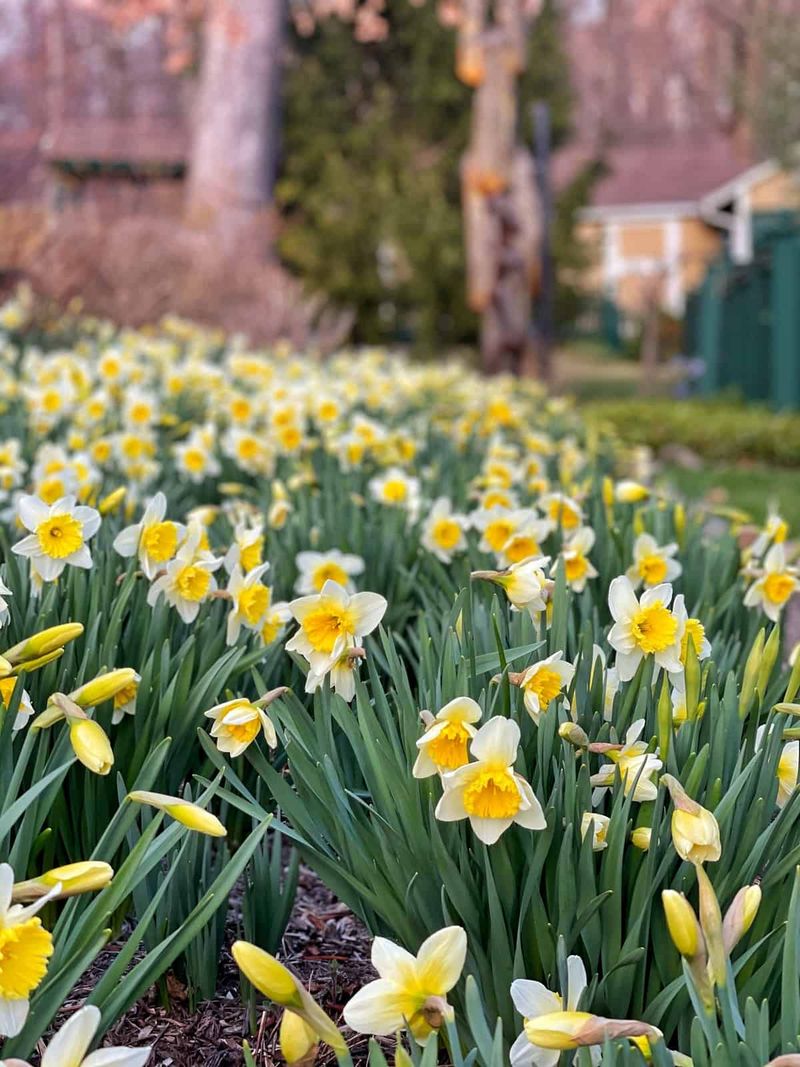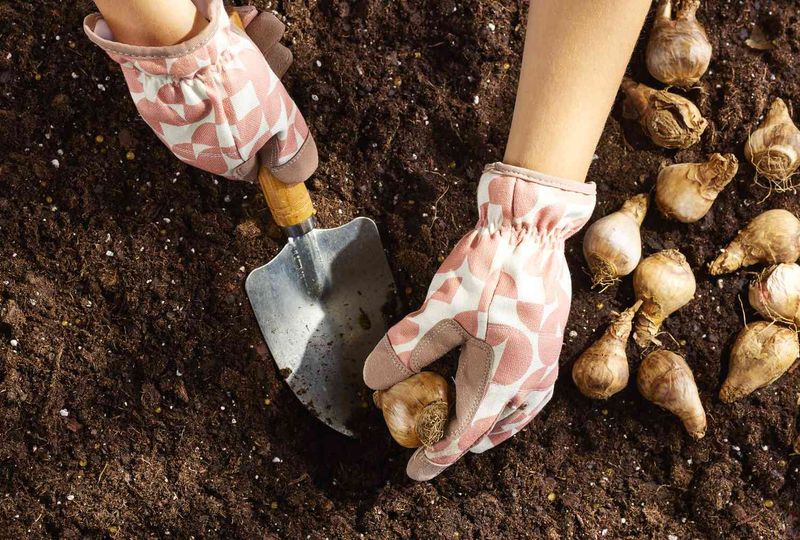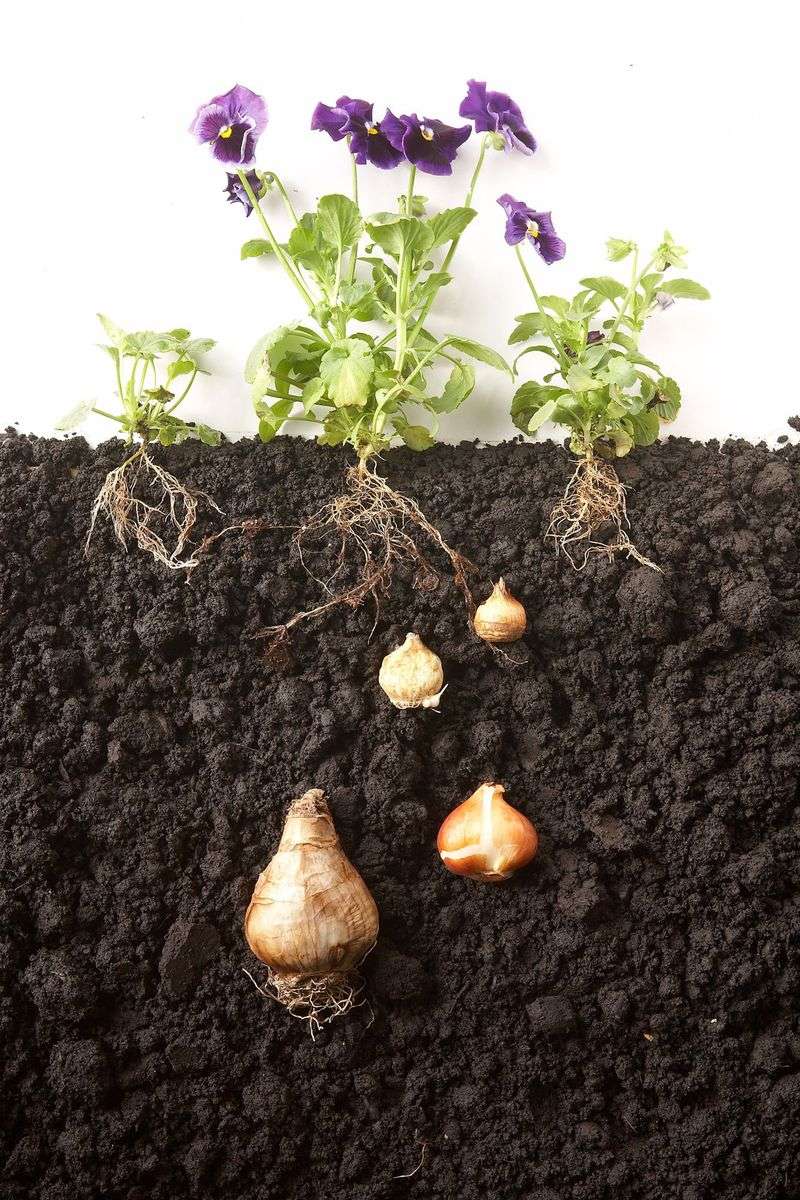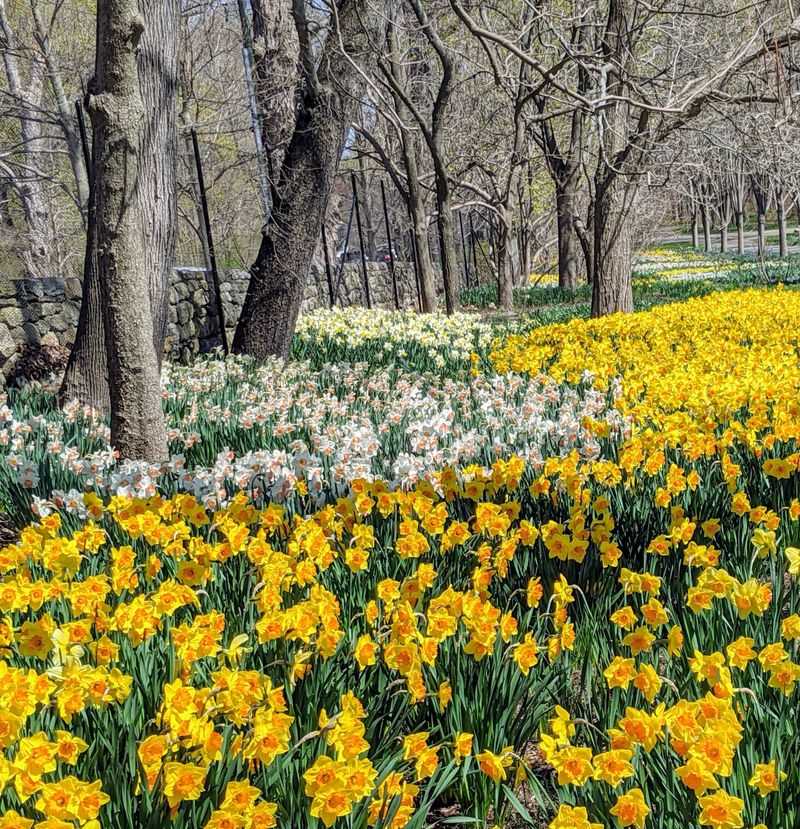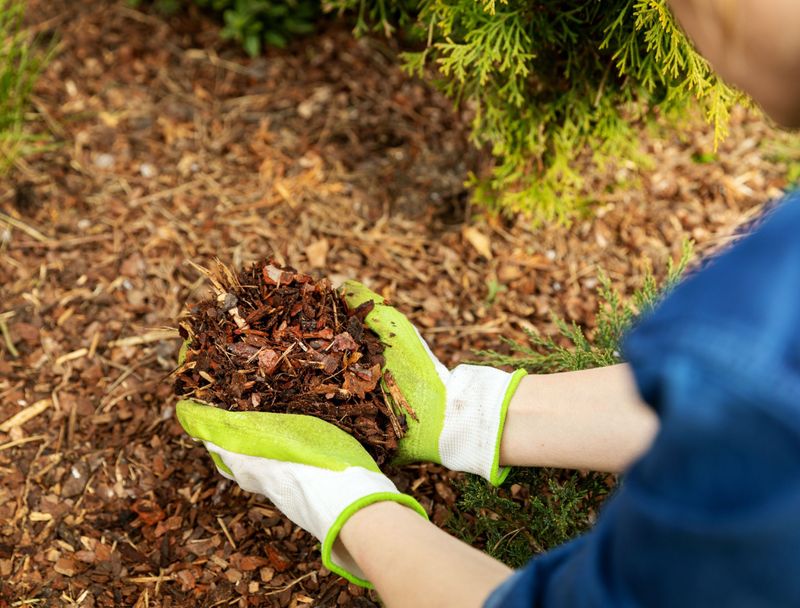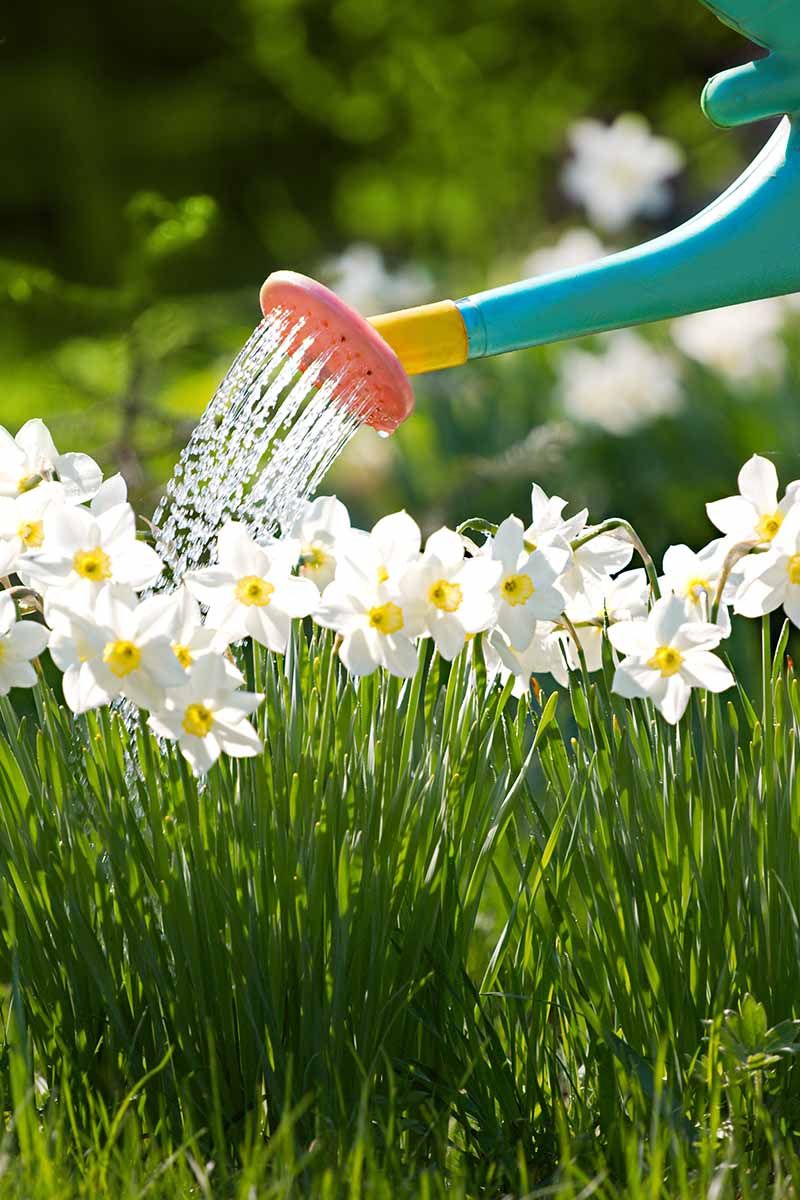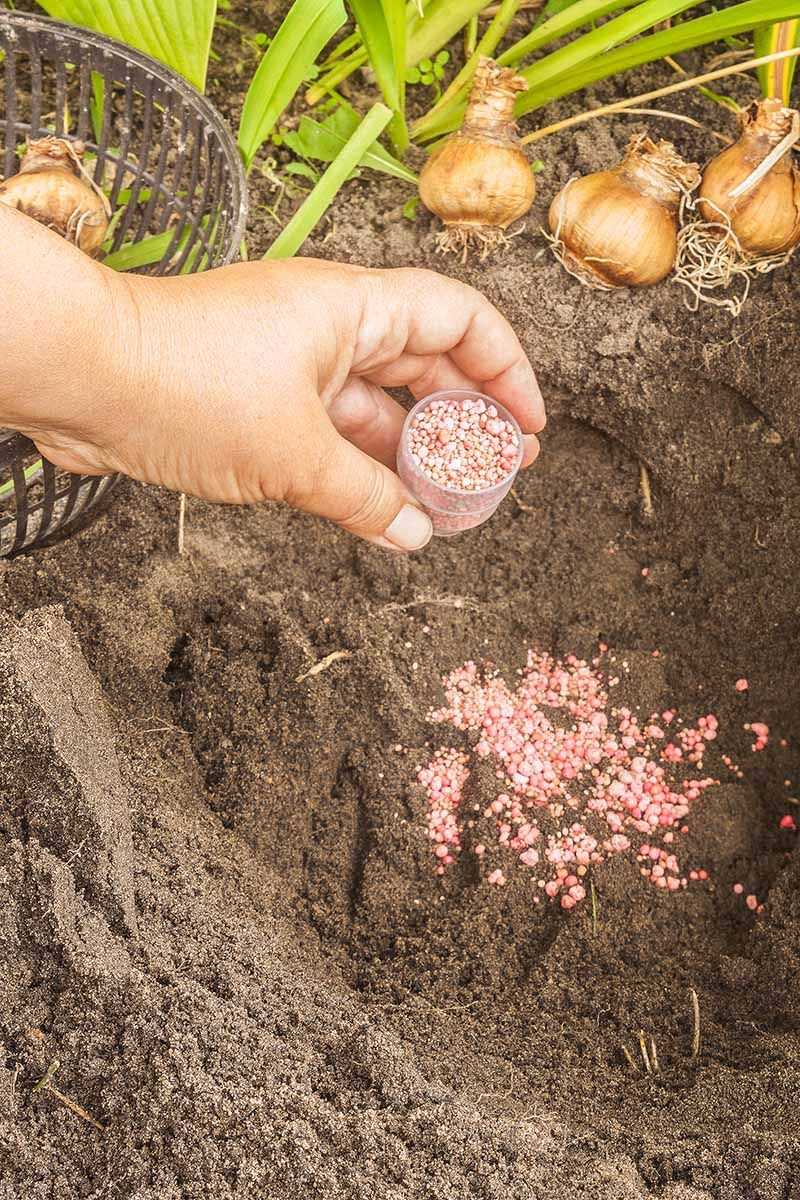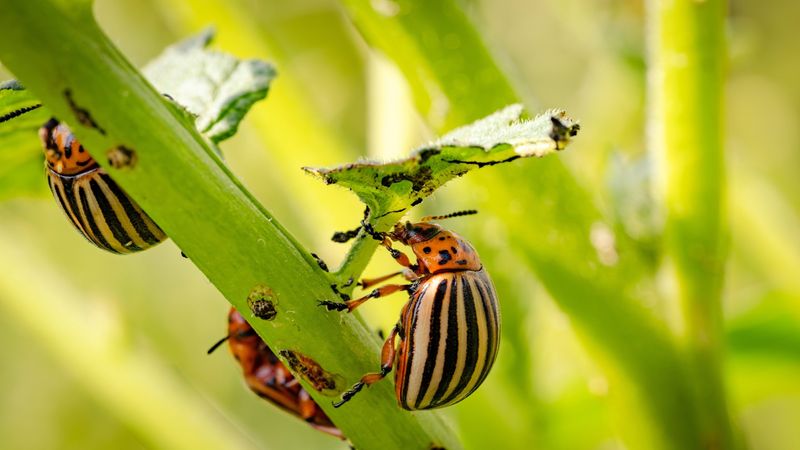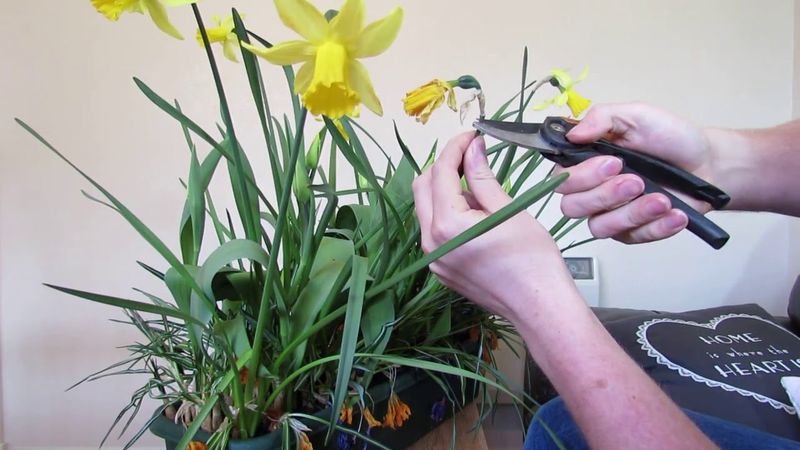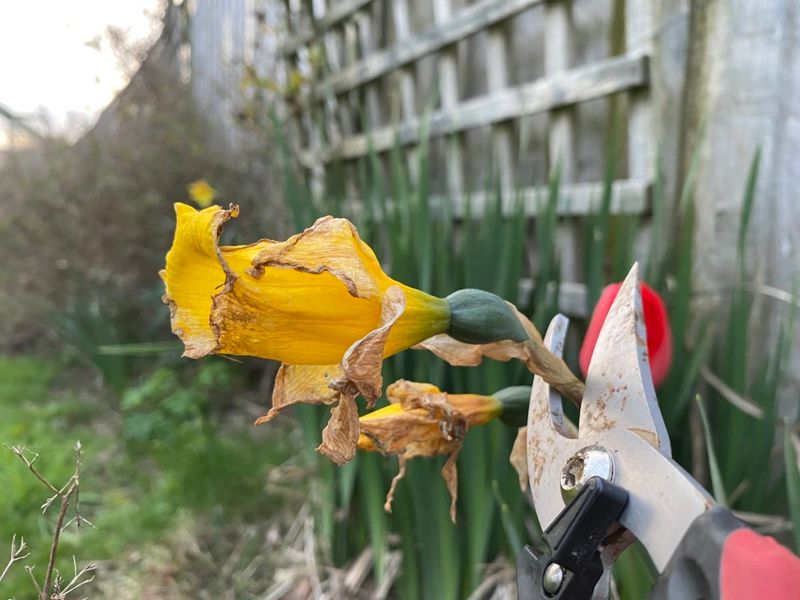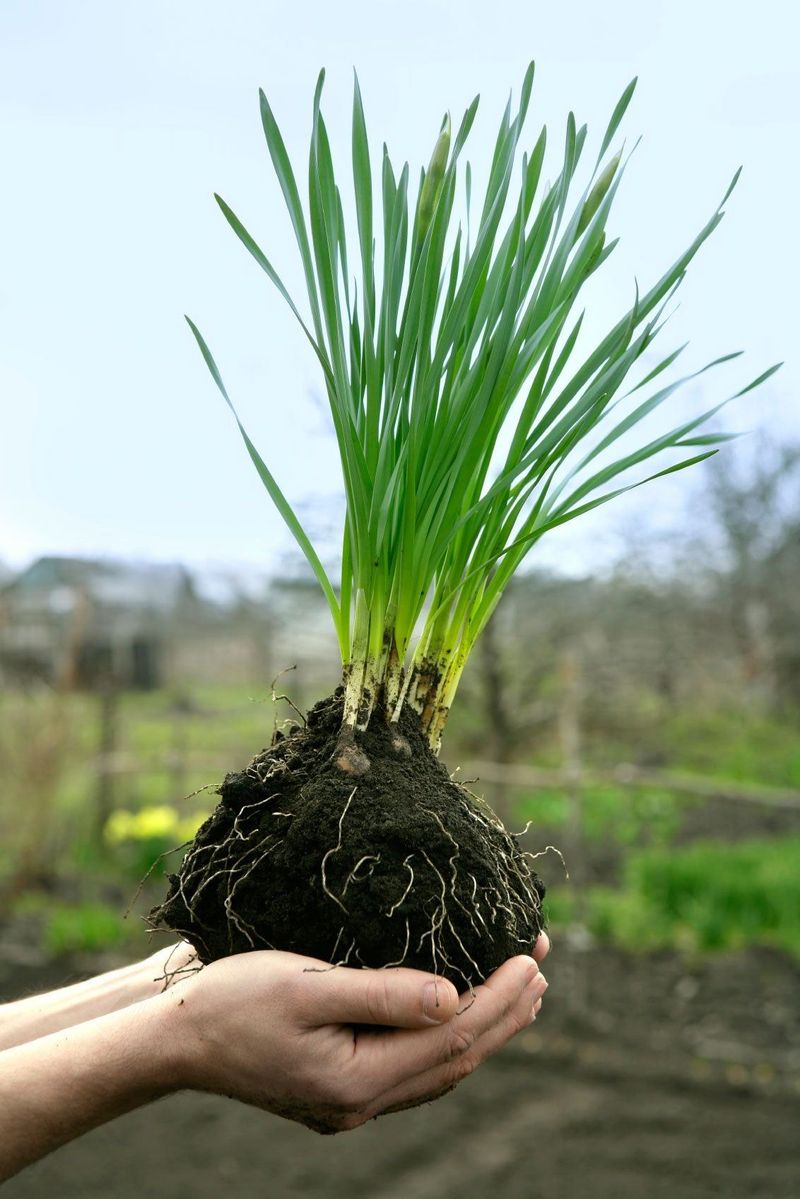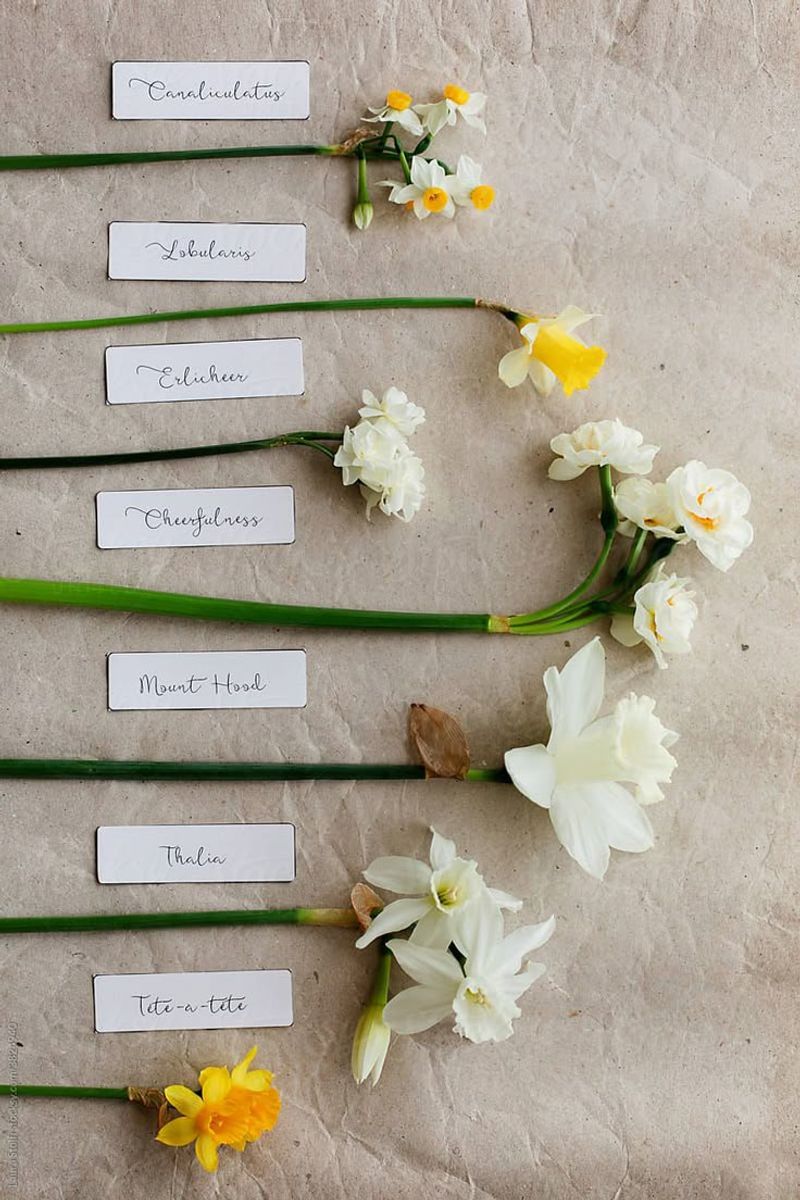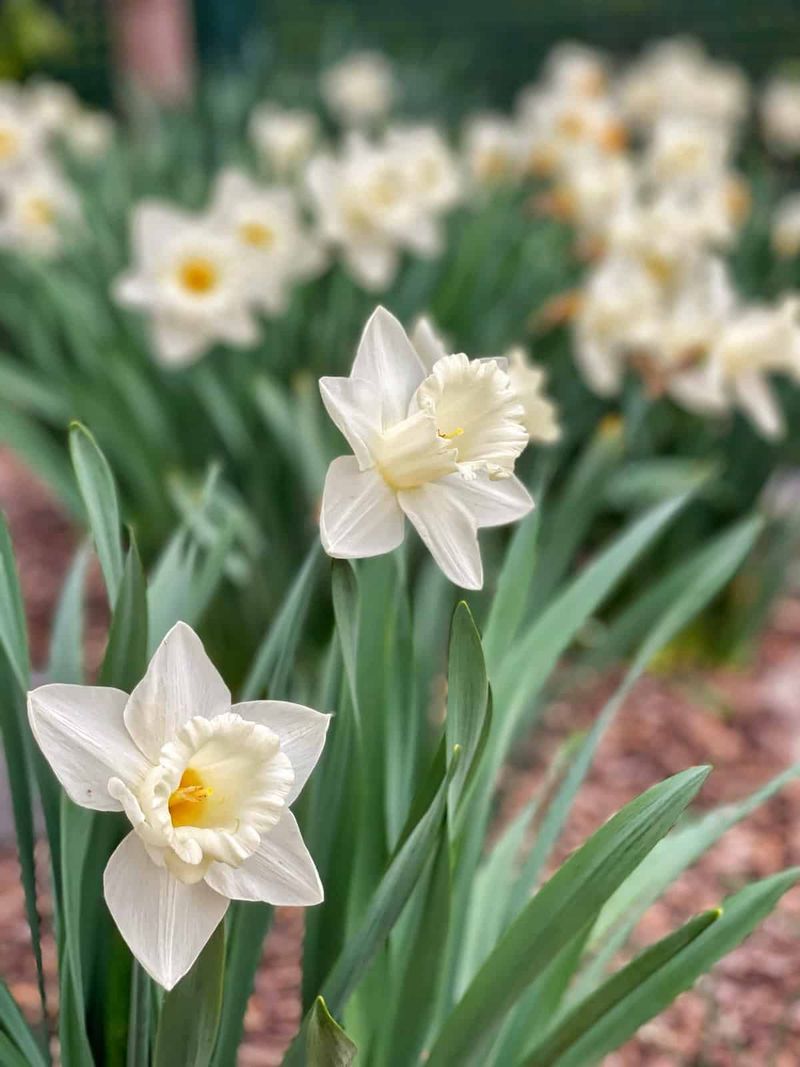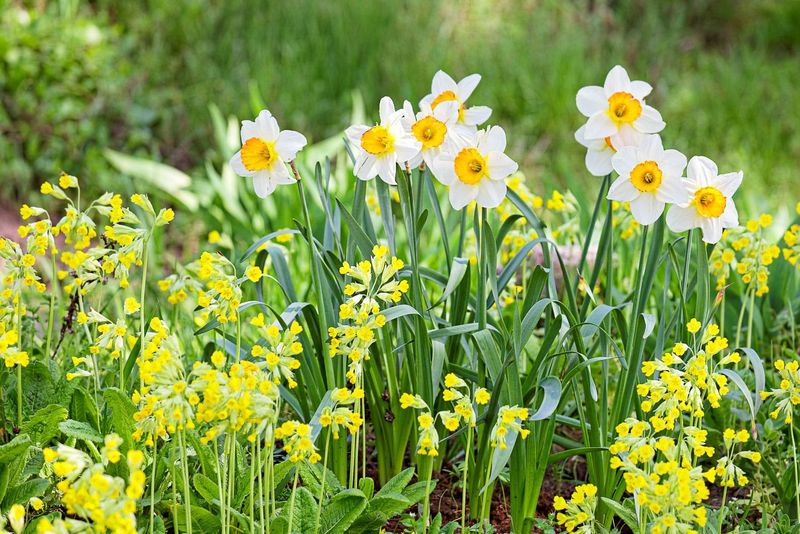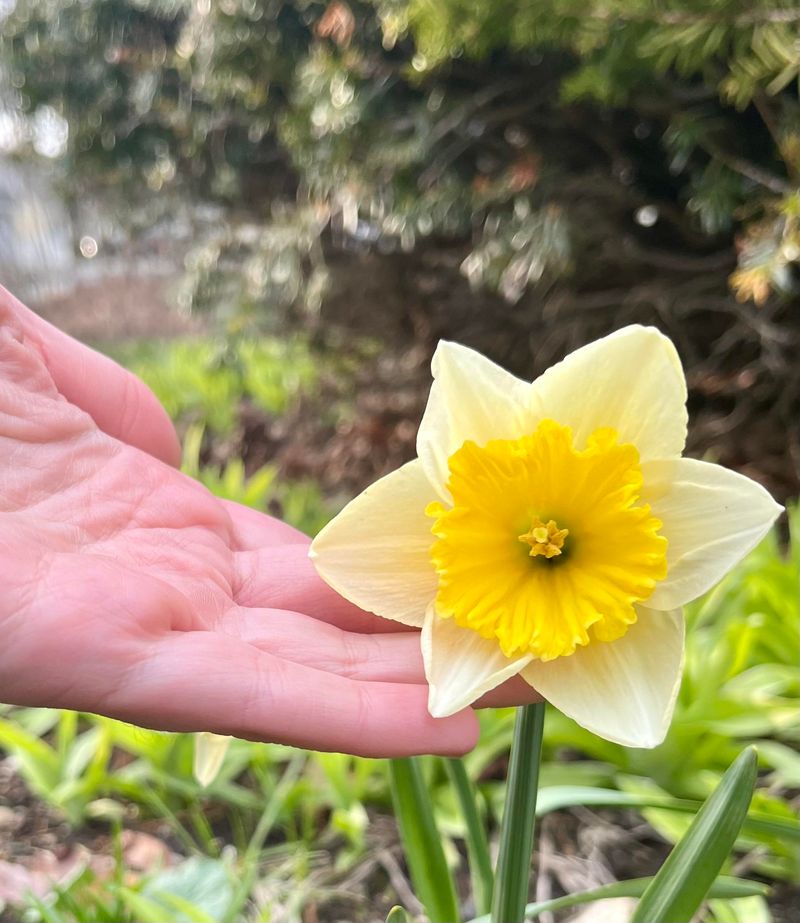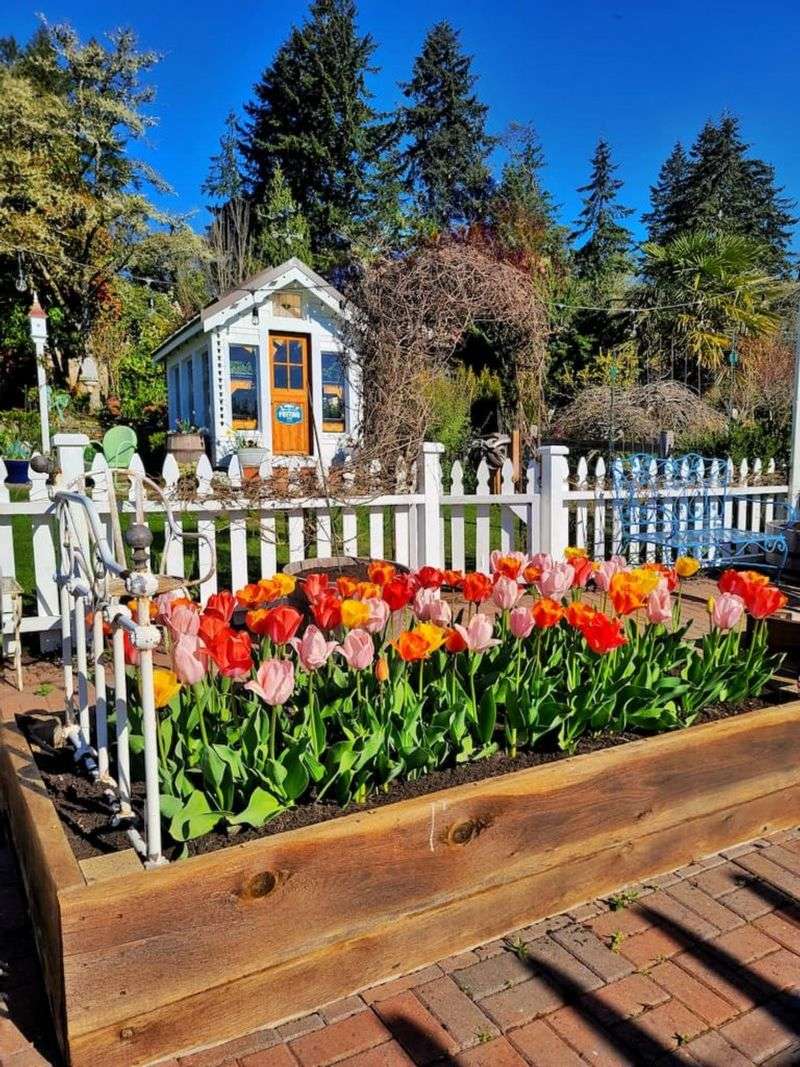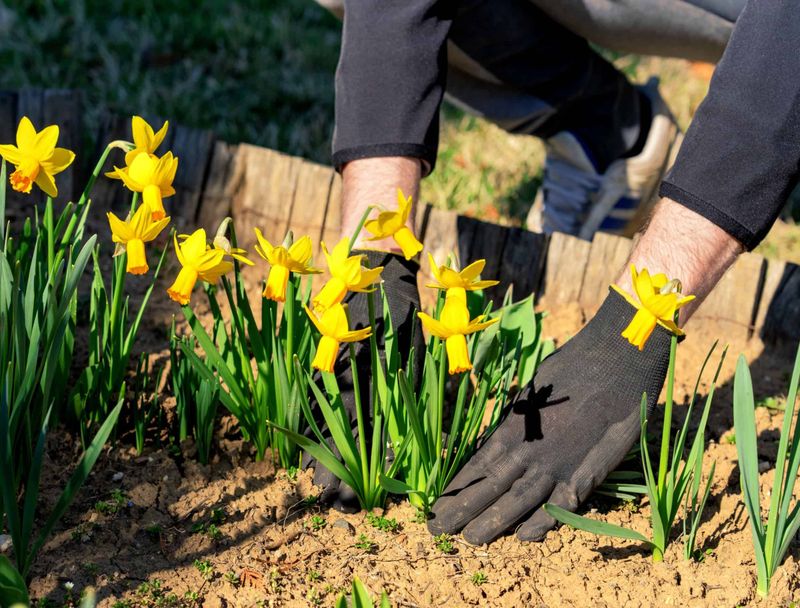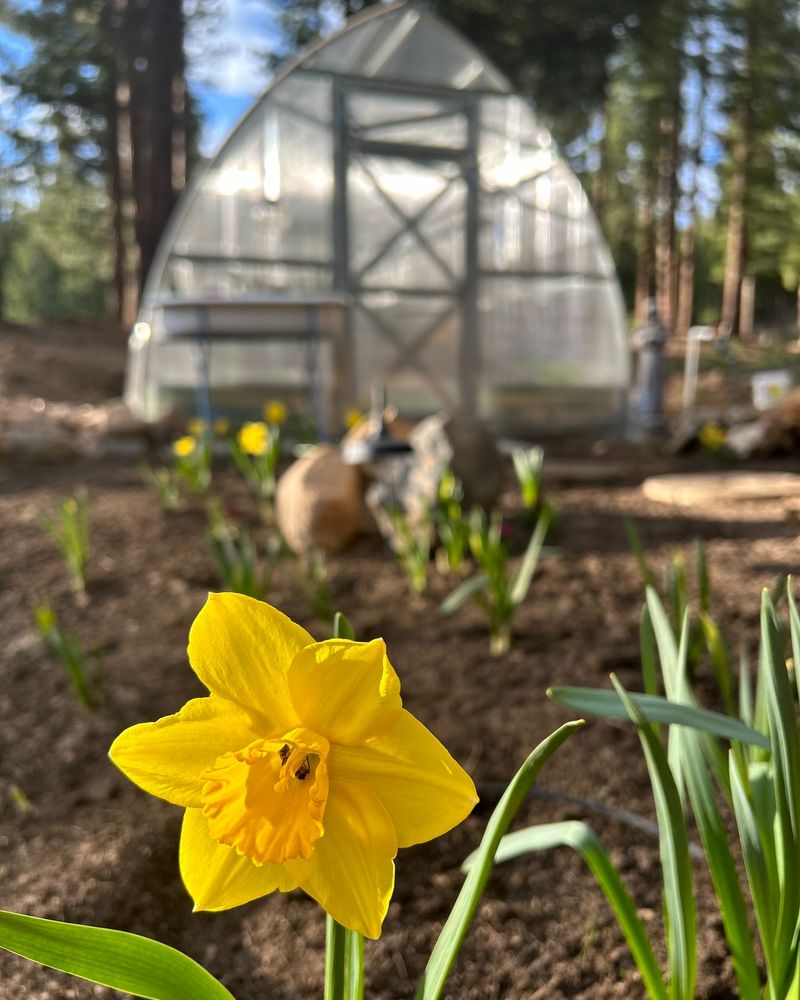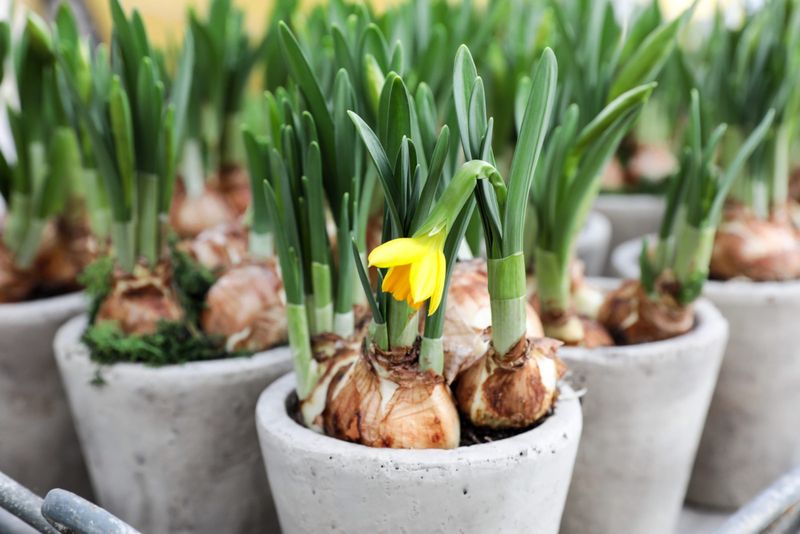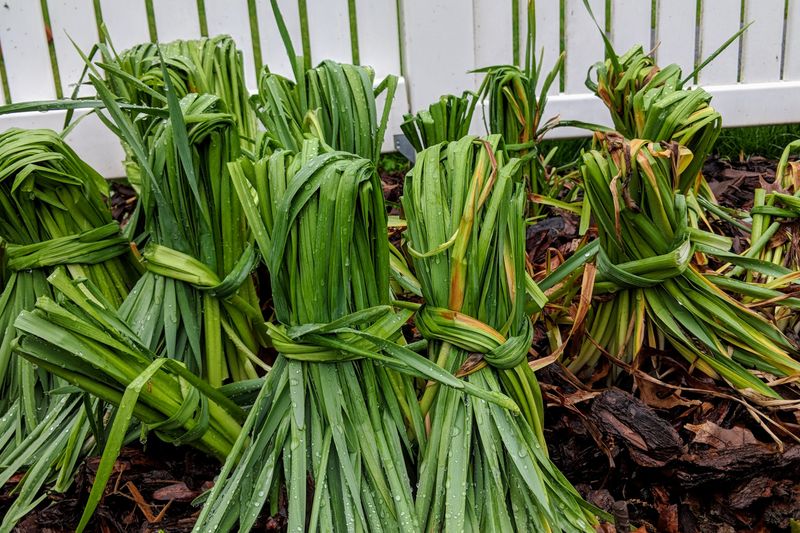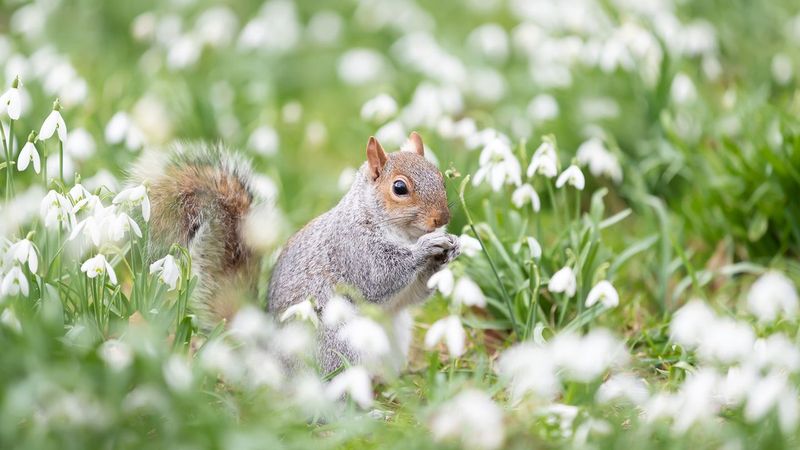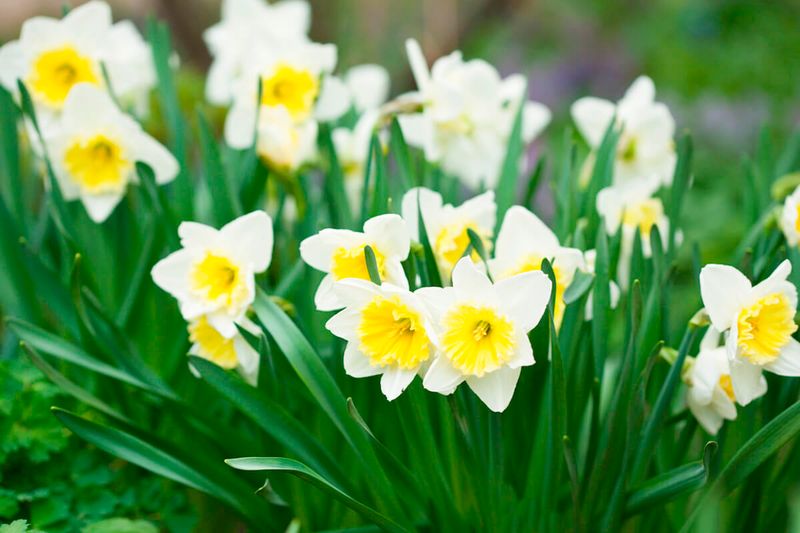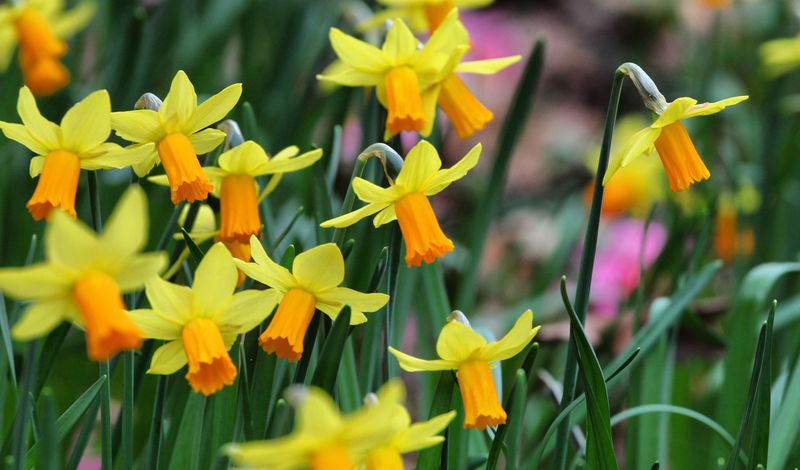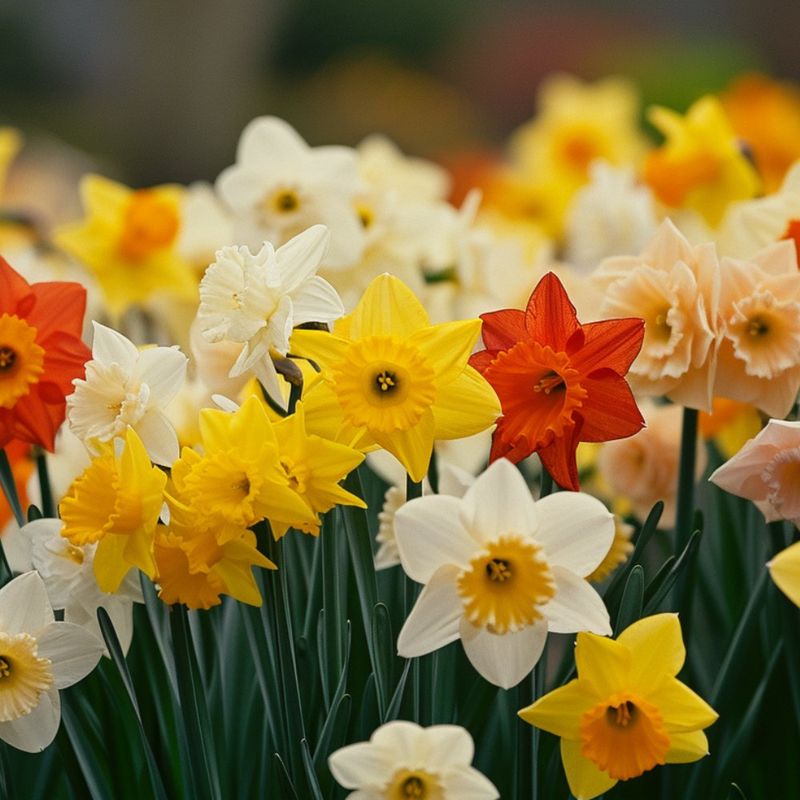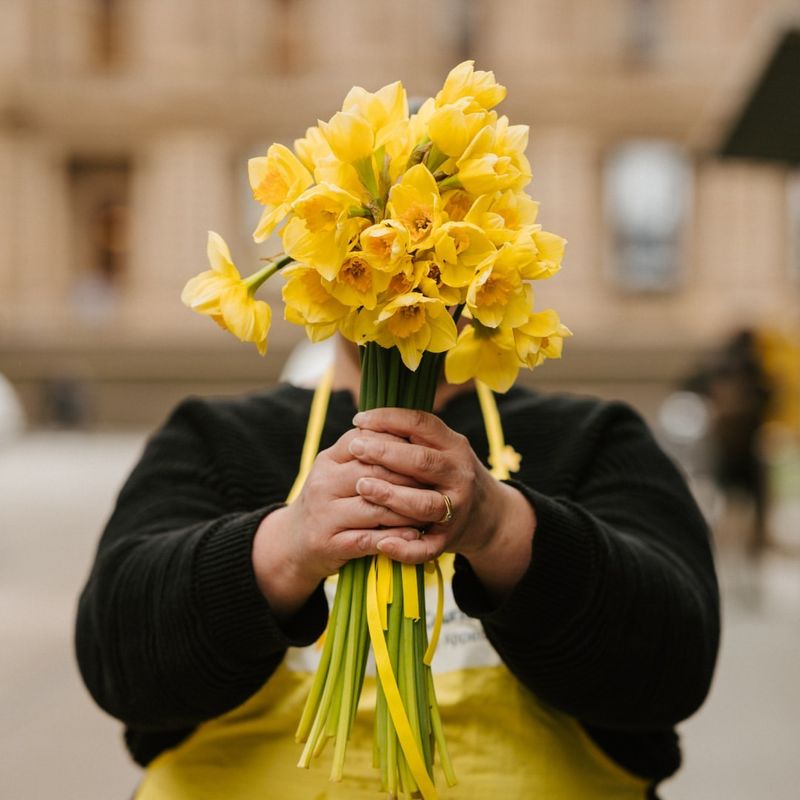Ever had a flower that just won’t give up, no matter how much you neglect it? That’s what growing daffodils feels like. It’s a wonderful mix of resilience and surprise.
These cheery blooms have taught me more about gardening than any manual, and now I’m here to spill the beans on how you can cultivate your very own golden parade.
Ready to dig into the secrets of successful daffodil growing? You’re in for a treat with these snappy and fun tricks that’ll have your garden smiling in no time.
1. Choose the Right Time to Plant
Timing is everything when starting a garden journey. For daffodils, the perfect moment to plant is in the cool embrace of autumn. This season allows bulbs to establish roots before winter’s chill sets in.
I’ve often found that waiting too long can mean missing the boat on those spring blooms. So grab your trowel and dig in before the first frost hits.
Doing this will set your daffodils up for a fantastic springtime display that will leave neighbors green with envy. Trust me, a little early effort goes a long way.
2. Pick the Perfect Spot
Location, location, location! Finding a sunny spot with well-drained soil is crucial for these little beauties to shine. My mistake of planting them in shady, damp spots taught me the hard way.
When you select a place that gets full sun, you’re basically giving your daffodils a VIP ticket to a blooming success. It’s like setting them on a stage under the spotlight, ready to perform their spring magic.
Make sure to avoid areas prone to waterlogging—the bulbs will thank you by bursting forth gloriously.
3. Soil Preparation is Key
Ever tried growing flowers in concrete? Neither have I, but planting daffodils in poor soil is close enough. Good soil preparation makes all the difference.
Mix in some compost or well-rotted manure to enrich the soil, giving your bulbs the nutrients they crave. It’s like preparing a gourmet meal for your daffodils, ensuring they get all the sustenance they need.
With the right preparation, you’re not just planting bulbs; you’re laying the groundwork for floral success.
4. Planting Depth Matters
Digging too deep or too shallow can be like signing a death warrant for your daffodils. The general rule of thumb is to plant bulbs about 6 inches deep.
This depth provides the perfect balance of protection and growth potential, allowing the bulbs to establish themselves securely.
Picture it as tucking your daffodils into a cozy bed, ensuring they wake up ready to flourish. Remember, little adjustments in planting depth can lead to big differences in bloom success.
5. Space for Growth
Give your daffodils a little room to breathe and grow. Crowding them can lead to competition for nutrients and stunted blooms.
By spacing them about 4-6 inches apart, you’re giving each bulb its own personal space. It’s like giving them a little elbow room, ensuring they can grow without bumping heads.
Think of it as creating a harmonious garden community where every daffodil has the freedom to shine without being overshadowed.
6. Mulch for Protection
Mulching is like giving your garden a warm blanket for the winter. A layer of mulch over your daffodil bulbs can protect them from the harsh winter cold.
This cozy cover helps retain moisture and keeps weeds at bay, ensuring the bulbs have a peaceful hibernation. It’s a simple step that pays dividends in healthy spring blooms.
Think of mulch as your garden’s version of a snug winter coat, warding off the elements and nurturing growth.
7. Water Wisely
Watering can be a double-edged sword. Too much and your daffodils might drown, too little and they wither before they bloom.
The trick is to water them sparingly, especially after planting, to help establish roots without saturating the soil. I’ve had my share of soggy bulb mishaps, so take it from me, less is more.
By giving your daffodils just the right drink, you’re setting them up for a successful, blooming season.
8. Fertilize for Success
Feeding daffodils can feel like cheating, but a little fertilizer goes a long way. Use a balanced bulb fertilizer once shoots appear.
It’s akin to giving your daffodils a power breakfast, fueling them for the blooming marathon ahead. Just a sprinkle does the trick, setting them on a path to robust growth.
Trust me, this tiny investment in nutrients yields a bounty of blooms that will make your garden the envy of the neighborhood.
9. Protect from Pests
Garden pests can be the uninvited guests at your floral party. Keeping them at bay ensures your daffodils stay in tip-top shape.
Natural deterrents like marigolds or garlic plants can help keep these intruders away. It’s like setting up a gentle yet firm bouncer at your garden gate.
With a little bit of planning, you can protect your daffodils from becoming a snack for garden pests, ensuring they bloom unscathed.
10. Deadhead for Rebirth
Spent blooms are like worn-out party hats; they need to go. Deadheading encourages new blooms and keeps your garden looking fresh.
Removing these tired flowers prevents seed production, directing energy back into the bulbs for next year’s growth. It’s like tidying up after a garden party to prepare for the next event.
This little act of maintenance can lead to spectacular displays year after year, making your efforts truly worthwhile.
11. Allow Foliage to Die Back
Letting the foliage die back naturally is like allowing your daffodils to recharge their batteries. It might look a bit untidy, but it’s crucial for bulb energy restoration.
During this period, the leaves are photosynthesizing and sending nutrients back to the bulbs for next season’s growth. Consider it the daffodils’ time to rest and rejuvenate.
Patience here pays off with stronger, more vibrant blooms in the following years.
12. Divide Every Few Years
Daffodils, like people, sometimes need a little space. Dividing them every few years prevents overcrowding and keeps them blooming brightly.
By carefully lifting and separating the bulbs, you encourage healthier growth. It’s a bit like decluttering your closet. Everything has more room to breathe and flourish.
This occasional intervention will lead to more prolific blooms and happier, healthier plants overall.
13. Label Your Varieties
Labels aren’t just for organizing spices; they’re great for daffodils too. Keeping track of different varieties ensures your garden plans stay on track.
I’ve often forgotten which varieties I’ve planted where, leading to a mismatched garden surprise. Labeling prevents this mishap and allows for more intentional arrangements.
By knowing exactly what’s planted, you can plan for a harmonious garden design that complements each variety’s unique characteristics.
14. Rotate Planting Locations
Even daffodils appreciate a change of scenery from time to time. Rotating planting locations every few years keeps the soil healthy and reduces disease risk.
It’s like giving your daffodils a new stage to perform on, and they respond with vigor. By changing their location, you can also experiment with different garden layouts.
This practice not only boosts plant health but also keeps your garden design fresh and exciting.
15. Consider Companion Planting
Companions in the garden world can make all the difference. Pairing daffodils with companion plants like tulips or hyacinths enhances both beauty and garden health.
It’s like creating a dynamic duo, where each plant complements the other, from color to growth habits. This companionship can also deter pests and improve soil quality.
By choosing the right companions, you create a symbiotic garden relationship that benefits all involved.
16. Monitor for Diseases
Diseases can sneak up on you like a ninja in the night. Regular monitoring helps catch issues before they become widespread.
Look for discolored leaves or unusual spots, and take action early to prevent spread. It’s like being a detective in your garden, solving mysteries before they cause chaos.
With diligent observation, you can maintain a healthy daffodil patch that thrives season after season.
17. Use Raised Beds for Poor Soil
When soil quality is lacking, think vertically. Raised beds can be the answer for gardens plagued by poor soil conditions.
This method allows you to control the soil environment, giving your daffodils the best possible growing conditions. It’s like building a custom home for your flowers.
By elevating their growing space, you bypass soil issues and ensure a thriving, blooming success.
18. Incorporate Natural Fertilizers
Synthetic fertilizers can be harsh, so why not go natural? Compost tea or fish emulsion provides gentle, effective nourishment for your daffodils.
These natural fertilizers enrich the soil and promote healthy, vigorous blooms. Consider it a spa day for your garden, giving it a treat without any harsh chemicals.
With natural nourishment, your daffodils will flourish beautifully and sustainably.
19. Check pH Levels
Soil pH is like a mystery ingredient in a recipe—the right balance makes all the difference. Daffodils prefer slightly acidic to neutral soil.
Testing soil pH provides insights into what adjustments might be needed. It’s a small step that can have a big impact on bloom success.
By ensuring the right pH level, you give your daffodils the perfect environment to grow and bloom abundantly.
20. Don’t Overcrowd in Containers
Container gardening with daffodils can be a space-saving solution. However, overcrowding can lead to disappointing results.
By spacing bulbs adequately in containers, you allow each one to grow to its full potential. It’s like ensuring everyone at the party has room to dance.
Proper spacing ensures healthy growth and a spectacular container display—no wallflowers here!
21. Protect from Harsh Winds
Strong winds can be a daffodil’s worst enemy, leaving them battered and broken. Providing a windbreak ensures they stay upright and proud.
Using natural barriers like shrubs or fences can shield your daffodils from the worst gusts. It’s like having a bodyguard for your blooms.
With this protection, your daffodils can sway gently rather than being toppled unceremoniously.
22. Mind the Squirrels
Squirrels can be like tiny garden bandits, digging up your daffodil bulbs with reckless abandon. Keeping them at bay protects your hard work.
Using deterrents like wire mesh or repellent sprays can save your bulbs from becoming a squirrel snack. It’s like setting up a security system for your garden.
With the right measures, you can outsmart these furry foes and ensure your daffodils bloom undisturbed.
23. Choose Disease-Resistant Varieties
Some daffodil varieties are tougher than others. Choosing disease-resistant types can save you from heartache down the road.
These hardy varieties are less susceptible to common diseases, ensuring a more robust garden. It’s like choosing the all-star team for your bloom squad.
With a little research, you can pick varieties that will stand the test of time and thrive with minimal fuss.
24. Consider Microclimates
Every garden has its little secrets—microclimates that can affect plant growth. Understanding these areas allows you to optimize daffodil planting.
Warmer spots might help bulbs emerge earlier, while cooler areas could prolong blooming. It’s like finding the sweet spots in your garden for maximum impact.
By leveraging these microclimates, you can stagger blooms and extend the daffodil season beautifully.
25. Experiment with Colors
Daffodils come in a surprising range of colors. Mixing these can create a dazzling display that’s anything but ordinary.
By experimenting with different hues, you add depth and interest to your garden. It’s like painting with a broader palette, where every shade tells a different story.
This playful approach can transform your garden into a tapestry of color. Truly a feast for the eyes.
26. Share Your Bounty
Why keep the beauty to yourself? Sharing daffodils with neighbors or friends spreads joy and fosters community spirit.
A simple bouquet can brighten someone’s day, turning your garden’s bounty into a shared celebration. It’s like sending a little sunshine into the world.
In giving part of your garden, you cultivate connections and spread happiness, proving that gardening is as much about community as it is about beauty.

